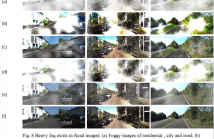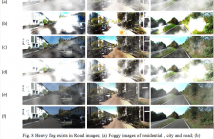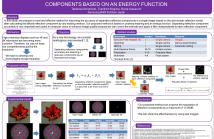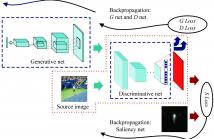
High accuracy is required for determining the orientation of a satellite in space. Amongst the existing sensors, a star tracker provides a very high accuracy of attitude determination. When no prior attitude is available, it operates in the “Lost-In-Space (LIS)” mode. Star pattern recognition is the most crucial part of a star tracker in the LIS mode. In this paper, a novel star pattern recognition approach is proposed, which constructs a signal from the features extracted in the star image and utilizes spearman correlation for identifying the correct stars.
POSTER.pdf
- Categories:
 15 Views
15 Views- Read more about An Efficient Haze Removal Algorithm Using Chromatic Properties
- Log in to post comments
Heavy fog degrades the quality of road images in losing contrast and color fidelity, which may cause errors in stereo matching and road segmentation for advanced driver assistance systems (ADAS). Accident rates can be reduced if robust and efficient algorithms are applied for fog removal. Most studies have been conducted on this subject to date, but existing methods are not suitable for heavy haze conditions. Local darkness, under-estimation and over enhancement are always occurred after dehazing.
- Categories:
 15 Views
15 Views
- Read more about An Efficient Haze Removal Algorithm Using Chromatic Properties
- Log in to post comments
Heavy fog degrades the quality of road images in losing contrast and color fidelity, which may cause errors in stereo matching and road segmentation for advanced driver assistance systems (ADAS). Accident rates can be reduced if robust and efficient algorithms are applied for fog removal. Most studies have been conducted on this subject to date, but existing methods are not suitable for heavy haze conditions. Local darkness, under-estimation and over enhancement are always occurred after dehazing.
- Categories:
 28 Views
28 Views
- Read more about An Efficient Haze Removal Algorithm for Video Sequence Using Chromatic Properties
- Log in to post comments
Heavy fog degrades the quality of road images in losing contrast and color fidelity, which may cause errors in stereo matching and road segmentation for advanced driver assistance systems (ADAS). Accident rates can be reduced if robust and efficient algorithms are applied for fog removal. Most studies have been conducted on this subject to date, but existing methods are not suitable for heavy haze conditions. Local darkness, under-estimation and over enhancement are always occurred after dehazing.
- Categories:
 59 Views
59 Views
- Read more about EFFICIENT IMPROVEMENT METHOD FOR SEPARATION OF REFLECTION COMPONENTS BASED ON AN ENERGY FUNCTION
- Log in to post comments
In this paper, we propose a novel and effective method for improving the accuracy of separating reflection components in a single image based on the dichromatic reflection model after calculating the diffuse reflection component by any existing method. Separating reflection components accurately is very important and useful in computer vision to detect highlight areas, which are often regarded as outliers, and to enhance image quality, especially texture, because we can control the intensity and apply a filter independently to each reflection component.
- Categories:
 34 Views
34 Views
- Read more about Efficiently Building 3D Line Model with Points
- Log in to post comments
poster.pdf
- Categories:
 5 Views
5 Views
High-fidelity virtual content is essential for the creation of compelling and effective virtual reality (VR) experiences.
- Categories:
 7 Views
7 Views- Read more about ICIP 2017 Paper #2528: 3D CONVOLUTIONAL NEURAL NETWORK WITH MULTI-MODEL FRAMEWORK FOR ACTION RECOGNITION
- Log in to post comments
- Categories:
 58 Views
58 ViewsHand segmentation is a fundamental technology in computer vision, which is used as a pre-processing step for various applications such as human-computer interaction (HCI), sign language translation, and medical systems. This demo provides interaction-free hand segmentation using Kinect camera. It is completely automatic, which can automatically segment foreground from the background and select the seed on the depth image for hand segmentation using Kinect camera.
- Categories:
 13 Views
13 Views
- Read more about AN ACCURATE SALIENCY PREDICTION METHOD BASED ON GENERATIVE ADVERSARIAL NETWORKS
- Log in to post comments
In this paper, we propose a saliency prediction algorithm utilizing generative adversarial networks. The proposed system contains two parts: saliency network and adversarial networks. The saliency network is the basis for saliency prediction, which calculates an Euclidean cost function on the grayscale values between the predicted saliency map and the ground truth. In order to improve the accuracy of the algorithm, adversarial networks are subsequently utilized to extract the features of input data by coordinating the learning rates of the two sub-networks contained in the networks.
- Categories:
 23 Views
23 Views